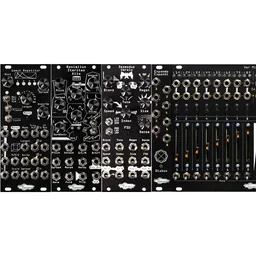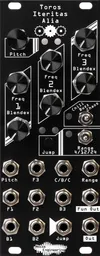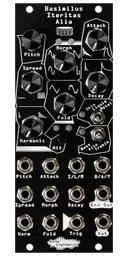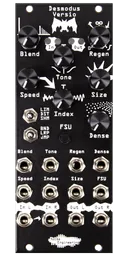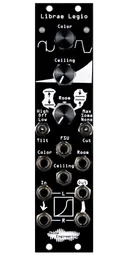Platforms: we love ‘em, and we’ve released quite a lot of alternate firmwares over the last few years. Today, we wanted to go over what a platform is, what each of our three platforms are capable of, and briefly what each of the alternate firmwares is capable of. If you’re thinking of purchasing a platform, we hope this will help you choose which one(s) will suit your system the best. If you already have one, this will give you a refresher on what’s possible!
Platforms: we love ‘em, and we’ve released quite a lot of alternate firmwares over the last few years. Today, we wanted to go over what a platform is, what each of our three platforms are capable of, and briefly what each of the alternate firmwares is capable of. If you’re thinking of purchasing a platform, we hope this will help you choose which one(s) will suit your system the best. If you already have one, this will give you a refresher on what’s possible!
What is a platform?
Before we get into the capabilities of all of these modules and firmwares, let’s answer the big question. Our platforms are modules that can run multiple different firmwares. This means that if you buy one of these platform modules, it can be transformed into a whole bunch of other modules. Doing this is simple: take your module out of your case, plug it into your computer with the USB port on the back, and use the Firmware page on our Customer Portal to swap to the desired firmware. Official firmwares are always free, and you can swap as many times as you want. Since swapping panels to match the controls is a lot of work, we also offer handy panel overlays that you can just drop over your module, as well as free, downloadable panels (available on each World Of__ page on our website) if you’re just looking for something to have on hand.
Our first platform: Versio, a stereo effects platform
Versio is a 10HP platform released in 2020. Versio is a stereo audio-processing platform, and has a wide variety of effects firmwares available. One interesting tidbit about hardware: since Versio was designed for effects, it’s not possible to turn it into an oscillator that tracks pitch, since pitch-accurate CV inputs require more complex and expensive circuitry than is present on the Versio. That said, there are a lot of things that the Versio can do: currently, there are 9 different firmwares available, and we have more planned.
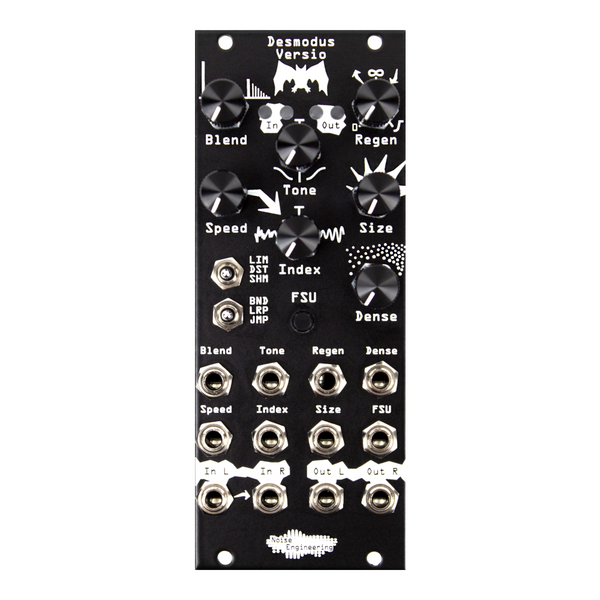
Ampla Versio
An ADSR envelope generator, tied to a VCA and a VCF. Audio can be processed by just the VCA, the VCA and the VCF, or a mix of both with the Blend parameter. The VCF can act as a lowpass, bandpass, or highpass filter, and has CV-controlled resonance. There’s also a chorus that can be enabled or disabled on the output.
Desmodus Versio
The firmware that started it all: our synthetic tail-generator reverb that’s perfect for creating an atmosphere or generating sound on its own with feedback that goes well over 100%. Desmodus features built-in modulation, clean/distorted/shimmering reverb modes, a filter, and input-based ducking when feedback is turned all the way up. Desmodus also features an FSU button that pings noise into the reverb and cranks the feedback all the way up.
Electus Versio
A variation on Desmodus created from user requests. Electus replaces Desmodus’s FSU button with a tap-tempo control for clock-synced echos and predelays. Desmodus’s interpolation speed switch is replaced with a predelay pan position switch. The rest of the firmware functions the same way between Electus and Desmodus.
Fala Versio
A stereo formant filter with pre-filter wavefolding and post-filter saturation. Fala features 1, 2, or 3 formants, with adjustable frequency and resonance. Fala also has a tap-tempo LFO that modulates the formants in the stereo field. 1, 2, or 4 copies of the formant filters can be stacked on top of each other, creating a chorus-like effect when combined with LFO modulation.
Imitor Versio
Imitor is a wild multitap delay: it features 12 taps, meaning that whatever sound you put into it will be heard at least 12 more times. It features internal modulation, and a number of parameters that control the timing, level, and spacing of taps. It’s perfect for experimentation if you want a delay that will be the main instrument in your patch.
Lacrima Versio
We decided that Eurorack’s surprising lack of autowah modules was something we wanted to fix. Lacrima features an envelope follower tied to a multimode filter with a couple of distortion parameters and a chorus.
Melotus Versio
Melotus is a granular delay that takes a sound in, splits it into grains, and lets you control how those grains are repeated. It’s somewhere between a delay and a traditional granular processor. It features a lowpass/highpass filter with suboctave/overtone generators respectively, and a number of ways to control how grains are played back. It’s clock syncable, too – or you can use the gate input and button to freeze grains in place.
Polydactyl Versio
Dynamics processing galore: audio is split into three bands, then processed with compression, expansion, and limiting. There’s a multiband distortion control, a noise gate, and a band split parameter, too.
Ruina Versio
When you need all of the distortion. Ruina features octave fuzz, wavefolding, a guitar-inspired tone/overdrive, stereo phase widening, and DOOM (a chaotic suboctave generator). The order of distortion processing can be swapped, too.
Yester Versio
A “simple” three-tap delay perfect for adding some clockable echoes to a patch – or adding some character with wavefolding and pitch shifting. Where Imitor is experimental and wild, Yester is our answer to a more traditional delay (though it still has some Noise Engineering extra touches).
Our second platform: Legio, a versatile, small stereo shapeshifter
A compact 6HP platform that can be a stereo oscillator, a synth voice, or an audio processor. Legio is small but mighty: there are five firmwares currently available that do drastically different things.
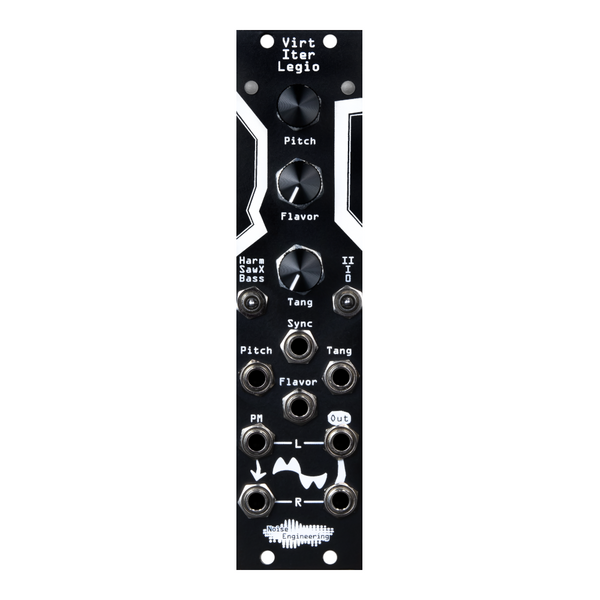
Ampla Legio
Ampla Legio is a multimode gate with a vactrol-inspired envelope generator. Featuring a multimode filter with lowpass, bandpass, and highpass modes, Ampla goes beyond the capabilities of a traditional lowpass gate with extra filter modes and resonance settings. Ampla's starting filter frequency can be adjusted via the encoder or with 1v/8va CV, so that the resulting output can be brighter or darker. Ampla features a vactrol-inspired attack/decay envelope with an optional sustain phase to control dynamics and filter cutoff.
Librae Legio
Librae is a dynamics processor: its processing is inspired by the Polydactyl Versio, but it’s a single-band processor, perfect for end-of-chain glue. Expansion, compression, limiting, two styles of distortion: it’s the perfect way to beef up a mix.
Roucha Legio
Roucha is a multimode filter with CV-controlled resonance, 1v/8va frequency tracking, and a wavefolder. It also features a performable tap-to-bypass control, so it’s a great choice for DJ-style buildups and drops.
Sinc Legio
Sinc is a three-algorithm freerunning oscillator with a big emphasis on stereo phase modulation. It covers all of your basic analog waveform needs, then adds wavefolding and various types of audio-rate modulation to beef things up. It has separate phase modulation inputs for left and right, so you can create some wild stereo effects, too.
Tymp Legio
A straightforward drum voice: three modes with three variations of each drum sound per mode. Audio can be passed through Tymp and mixed with the sounds it generates, so you can skip the mixer and build up a whole drumkit by chaining a few Tymps together. External audio is ducked to kicks and snares, too, perfect for dance and techno patches.
Virt Iter Legio
The firmware that started it: three freerunning oscillator algorithms that cover additive, supersaw, and audio-rate modulation concepts for a huge amount of timbral range. Just like Sinc, Virt Iter features stereo PM inputs, too. You may have heard these algorithms in the Arturia Microfreak and our Virt Vereor plugin as well.
Morbus Legio
A combination noise generator and distortion processor: an unlikely pairing that ended up being one of our favorite firmwares ever. Wavefolding, saturation, full-wave rectification, and a bypassable stereo noise oscillator with tons of character.
Born from the ashes of a discontinued processor: Alia
The newest platform: Alia was designed for larger oscillators and synth voices, bringing back some classic Iteritas modules as well as some completely new ideas. It’s a great choice if you want some of our most famous voices along with new synthesis ideas and a whole lot of flexibility. We’ve written about the backstory on Alia elsewhere, but when the processor for some of our most popular modules was end-of-lifed, customers were sad, and so were we. We designed Alia to be able to bring back some of our classics, and also to make some more fun things. Alia is mono, and includes an envelope output.
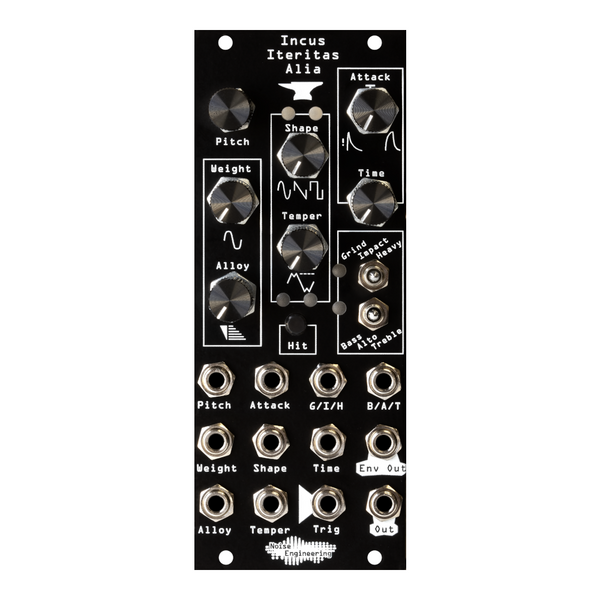
Ataraxic Iteritas Alia
Inspired by our first module ever, Ataraxic Translatron, Ataraxic Iteritas is a freerunning oscillator that makes glitchy sounds with huge amounts of low end easier than ever. It’s a wonderful choice for square-ish waveforms that can be distorted and taken to new realms with the twist of a few parameters. It’s also my personal favorite oscillator for hard sync.
Basimilus Iteritas Alia
Our most popular module ever, revitalized on the Alia platform. It’s a full synth voice with an additive/FM structure that’s absurdly flexible. If you need percussive sounds, Basimilus is a whole drum kit in a single module, with leads, basslines, and sound effects all well within its wheelhouse, too.
Cursus Iteritas Alia
Long known to be the gentlest NE oscillator, this freerunning oscillator gives you spectral control over a dynamically generated wavetable. In use, you can easily morph between gentle and distorted, or earth-shaking and ethereal, and everything in between.
Debel Iteritas
The first entirely new Iteritas designed specifically for the Alia platform: Debel takes a classic FM patch and re-engineers it to have some classic NE spice. It’s a full phase-modulation voice that’s quick to dial in and a joy to jam. Bells, clangs, and dance floor-ready hits are all on the menu with Debel.
Incus Iteritas Alia
We like percussion. A lot. Incus takes some of our favorite synthesis techniques from the 10+ years we’ve been making oscillators and puts them into a compact, jammable package. Incus is a full voice that’s perfect for synthesizing giant kicks and snares, or wild PM leads and basslines.
Manis Iteritas Alia
Manis was designed to be the hardcore counterpart to the original Basimilus. Using a similar synthesis structure but only generating sounds with saw waves, it has a unique timbre that’s unlike anything else. It’s perfect for darkwave instrumentation, supersaws, and industrial impacts.
Toros Iteritas Alia
Toros takes our favorite things about FM synthesizers and does away with the often confusing interfaces. Toros has three different phase-modulation algorithms comprised of three or four oscillators. The three Blendex controls change whether operators modulate the next oscillator in the algorithm or are fed to the main mix output. The frequency controls can be constrained to a minor third, an octave, or two octaves, perfect for dialing in the exact style of sound you need for your patch. If you like drones, Toros is the oscillator for you.


